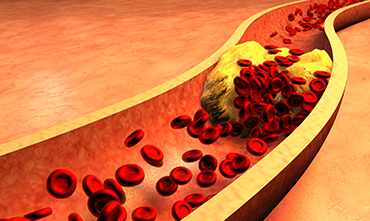Understanding Coronary Heart Disease

Coronary heart disease (CHD), also known as coronary artery disease (CAD) or ischemic heart disease, is one of the most common heart conditions. It occurs when the arteries that supply oxygen-rich blood to the heart muscle become narrowed or blocked due to the buildup of fatty deposits called plaque. This can restrict blood flow, increasing the risk of chest pain (angina), heart attacks, and cardiac arrest.
How Common Is Coronary Heart Disease?
CHD is a leading cause of death worldwide. Many people remain unaware they have the condition until they experience chest pain, a heart attack, or sudden cardiac arrest. In some cases, symptoms may develop gradually, while in others, a blockage can occur suddenly, leading to life-threatening complications.
Types of Coronary Artery Disease
CHD can affect the coronary arteries in different ways:
- Obstructive Coronary Artery Disease: When a large artery is more than 50% blocked, reducing blood flow to the heart.
- Non-Obstructive Coronary Artery Disease: A partial blockage (less than 50%) that still affects circulation and may cause symptoms.
- Coronary Microvascular Disease: A condition where the small arteries inside the heart muscle are damaged, reducing blood flow. This is more common in women.
Symptoms of Coronary Heart Disease
Symptoms of CHD vary from person to person. Some may experience warning signs early on, while others may not know they have the disease until a serious event occurs.
Common symptoms include:
- Chest pain or discomfort (angina) – A feeling of tightness, pressure, or burning in the chest, especially during physical activity or stress.
- Shortness of breath – Difficulty breathing, particularly with exertion.
- Fatigue – Feeling unusually tired, even with minimal activity.
- Heart palpitations – Irregular heartbeats or a fluttering sensation.
- Dizziness or fainting – Especially if blood flow to the brain is reduced.
If a coronary artery becomes fully blocked, it can lead to a heart attack, which requires immediate medical attention.
Causes and Risk Factors
Coronary heart disease develops over time due to a combination of lifestyle and genetic factors. Key risk factors include:
- High cholesterol – Excess cholesterol contributes to plaque buildup.
- High blood pressure – Puts extra strain on artery walls.
- Smoking – Damages blood vessels and reduces oxygen supply.
- Diabetes – Increases the risk of artery damage and blockages.
- Obesity – Excess weight strains the heart and increases inflammation.
- Sedentary lifestyle – Lack of physical activity weakens heart function.
- Family history – Having a close relative with CHD raises the risk.
- Unhealthy diet – High in saturated fats, salt, and processed foods.
- Chronic stress – Can contribute to high blood pressure and heart strain.
Preventing and Managing Coronary Heart Disease
The good news is that coronary heart disease is often preventable. Making heart-healthy lifestyle choices can slow or even reverse plaque buildup in the arteries.
Steps to Reduce Your Risk
- Eat a heart-healthy diet rich in fruits, vegetables, whole grains, and lean proteins.
- Exercise regularly to strengthen the heart and improve circulation.
- Manage blood pressure and cholesterol through diet, exercise, and medication if necessary.
- Quit smoking to improve heart and lung health.
- Maintain a healthy weight to reduce strain on the cardiovascular system.
- Manage stress through relaxation techniques and mindfulness.
Diagnosis and Treatment Options
Your doctor will diagnose coronary heart disease based on symptoms, medical history, risk factors, and diagnostic tests such as:
- Electrocardiogram (ECG) – Measures the heart’s electrical activity.
- Echocardiogram – Uses ultrasound to assess heart function.
- Stress test – Monitors heart performance during exercise.
- Coronary angiography – Uses imaging to check for blockages in the arteries.
- CT coronary angiogram – Provides a detailed view of coronary arteries.
Treatment Approaches
- Lifestyle modifications – The first line of defense in preventing and managing CHD.
- Medications – To control blood pressure, cholesterol, and prevent blood clots.
- Angioplasty and stenting – A minimally invasive procedure to open blocked arteries.
- Coronary artery bypass grafting (CABG) – A surgical procedure to restore blood flow by bypassing blocked arteries.
Taking Control of Your Heart Health
Coronary heart disease is a serious but manageable condition. With early detection, lifestyle adjustments, and medical interventions, individuals can reduce their risk and lead a healthier life. Regular heart screenings and proactive healthcare can make a significant difference in preventing complications and improving heart function.




